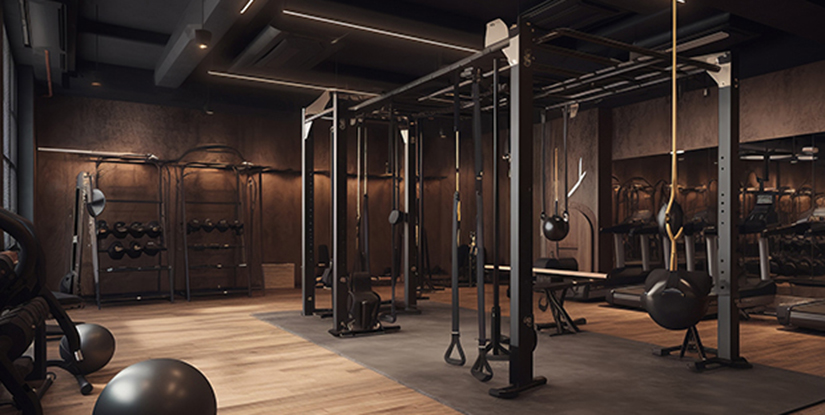Fitness Accessories Manufacturers | OEM & ODM Suppliers for Quality Gear

Market Overview for Fitness Accessories Manufacturers
The market for fitness accessories has expanded rapidly as consumer demand shifts toward home workouts, boutique studios, and personalized training. Manufacturers that supply high-quality, durable, and compliant accessories—ranging from resistance bands and yoga mats to wearable supports and recovery tools—are positioned to capture sustained growth. Understanding market trends, regulatory expectations, and material innovation is essential for procurement professionals, brand owners, and product developers.
Core Product Categories
- Training aids: resistance bands, kettlebells, jump ropes, suspension trainers
- Recovery and mobility: foam rollers, massage guns, therapy balls
- Wearable supports: wrist wraps, knee sleeves, weightlifting belts
- Yoga and Pilates: mats, blocks, straps, balance tools
- Accessories: water bottles, gym bags, sweat towels, trackers
Materials and Manufacturing Technologies
Material selection directly affects performance, durability, and user safety. Common materials include natural and synthetic rubbers, high-density EVA foam, TPE, neoprene, stainless steels, and engineered plastics. Advanced manufacturing methods—such as injection molding, CNC machining, heat-sealing, and laser engraving—enable precise tolerances and repeatable quality. For wearable items, seamless knitting and flatlock stitching reduce chafing and extend product life.
Quality Standards and Compliance
Compliance with international standards is non-negotiable for reputable manufacturers. Key certifications and testing include ISO 9001 for quality management, REACH and RoHS for chemical safety, and specific material testing for allergen and toxicology concerns. Physical performance tests—tensile strength, abrasion resistance, and load-bearing validation—ensure the accessories meet advertised specifications.
Design, Customization, and OEM/ODM Services
Manufacturers often offer OEM and ODM capabilities to support brand differentiation. Typical services include custom color matching, logo printing or embossing, bespoke packaging, and tailor-made ergonomics. Collaborative design support—prototyping, iterative testing, and user trials—reduces time-to-market and enhances product-market fit.
Quality Control Processes
- Incoming material inspections and supplier qualification
- In-line production monitoring and first-piece verification
- Batch sampling and destructive testing where applicable
- Final inspection, functional testing, and traceability documentation
Packaging, Logistics, and Lead Times
Packaging plays a critical role in protecting products during transit and reinforcing brand perception. Options range from eco-friendly kraft boxes to retail-ready blister packs. Efficient logistics planning should account for lead times, seasonal demand, and customs clearance. Typical production-to-shipment timelines vary by complexity: simple molded accessories may ship within 4–8 weeks, while fully customized assemblies often require 10–16 weeks.
Sustainability and Responsible Sourcing
Brands increasingly prioritize sustainable materials and manufacturing practices. Recyclable packaging, low-VOC materials, and programs for closed-loop recycling are competitive differentiators. Manufacturers that disclose supply chain audits, energy usage, and waste reduction initiatives align better with global sustainability goals and buyer expectations.
Cost Structure and Pricing Factors
Pricing depends on materials, complexity, certification requirements, and order volume. Economies of scale improve per-unit costs, but manufacturers should transparently itemize tooling, mold fees, minimum order quantities (MOQs), and shipping to avoid surprises. Total landed cost—including duties, freight, and inland distribution—should be modeled for accurate procurement decisions.
Selecting the Right Manufacturer
Key selection criteria include manufacturing capability, quality records, lead-time reliability, communication, and financial stability. Request factory audits, reference clients, and sample production runs. Consider geographic diversification to mitigate supply chain disruption, while balancing cost and logistical complexity.
After-Sales Service and Warranty
Strong after-sales support enhances brand reputation. Manufacturers should provide clear warranty terms, repair or replacement policies, and spare-part availability. Extended testing and clear documentation reduce returns and protect end-user safety.
Emerging Trends
- Integration of smart sensors into accessories for performance tracking
- Increased demand for multifunctional, space-saving home fitness solutions
- Personalization and limited-run product drops to engage direct-to-consumer channels
Practical Sourcing Checklist
- Define technical specifications and target retail price
- Validate materials for safety and longevity
- Request prototypes and conduct user testing
- Obtain inspection reports and certification evidence
- Negotiate MOQs, lead times, and payment terms
Conclusion
Partnering with the right fitness accessories manufacturer requires a balance of technical due diligence, quality assurance, and strategic alignment. Prioritize vendors that demonstrate transparent processes, robust testing, and continuous improvement. With the right partner, brands can deliver reliable, safe, and differentiated accessories that meet evolving consumer expectations.
FAQs
- Q: What minimum order quantities are typical? A: MOQs vary widely; expect 500–2,000 units for molded items, lower for standard stocked products.
- Q: How long are lead times? A: Simple items 4–8 weeks; custom products 10–16 weeks depending on tooling.
- Q: What certifications matter most? A: ISO 9001, material safety tests, REACH/RoHS as relevant to markets.
- Q: Can manufacturers provide OEM branding? A: Yes; most offer logo printing, packaging, and color customization.
- Q: How is quality controlled? A: Incoming inspections, in-line monitoring, batch testing, and final QA checks.
- Q: Are sustainable materials available? A: Increasingly yes; look for recycled plastics, natural rubber, and low-VOC foams.
- Q: What affects pricing most? A: Material cost, complexity, certifications, and order volume.
- Q: Do manufacturers handle shipping? A: Many provide FOB, CIF, or DDP shipping options; confirm terms upfront.
- Q: How to verify a new supplier? A: Request samples, audit reports, client references, and factory credentials.

